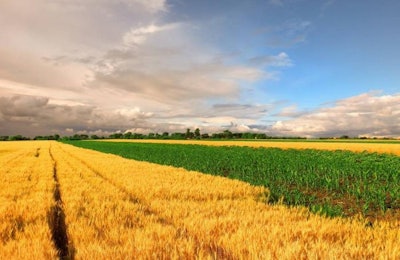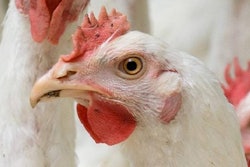
USDA has issued its first projections for crop and livestock supply and prices in 2018-19. Some areas look to see a decrease in production. Although it is still far to early to tell what may happen, some forecasts look to be promising in terms of price increases.
Wheat
The 2018-19 U.S. wheat crop is projected at 1,821 million bushels, up 5 percent from the prior year. The increase is due to greater harvested area and slightly higher yield. Reduced beginning stocks and imports bring total supplies down 49 million bushels from the previous year.
The all-wheat yield is projected at 46.8 bushels per acre, only a slight increase.
Winter wheat yields are below average due to drought and a long cold winter in Kansas, Oklahoma and Texas.
“Certainly, the southern Plains have had prolonged, very cold temperatures on a crop that didn’t have significant snow cover for protection and more risk for the later planted wheat,” said Justin Gilpin, CEO of the Kansas Wheat Commission and Kansas Association of Wheat Growers. That, combined with dry conditions highlighted by the drought monitor report, are playing into the significant decline in Kansas wheat crop ratings, he said this spring.
The season-average farm price is projected at a range of $4.50 to $5.50 per bushel.
Global wheat production is projected at 747.8 million tons, down 10.6 million from the previous year’s record.
Corn
Total U.S. corn use in 2018-19 is forecast to decline modestly from a year ago.
“The yield, projected to 174 bushels per acre, is based on a weather-adjust trend assuming that both planting progress and summer weather remain normal in comparison with that seen over the prior 30 years," the American Corn Growers Association (ACGA) said on its website. "If realized, it would be the third-highest yield on record.”
Food, seed and industrial (FSI) use is projected to rise 75 million bushels to 7.1 billion, driven by an expected increase in the amount of corn used to produce ethanol.
U.S. corn exports are forecast to decline 125 million bushels. Reduced exports out of Argentina and Brazil are expected to boost U.S. exports during the first half of 2018-19. However, a nearly 265-million-bushel increase in the combined corn exports for Ukraine and Russia in 2018-19 will likely increase competition for the United States, reducing the forecast U.S. share of global corn trade from a year ago, the USDA report said.
The season-average farm price is projected at $3.30 to $4.30 per bushel, up 40 cents at the midpoint from 2017-18.
“Lower forecast production coupled with somewhat decreased demand results in higher cost projections,” ACGA said.
China’s total corn supply is down 11 million tons in 2018-19.
Livestock
The Food and Agriculture Organization (FAO) said that, in developing countries, where world population regularly increases, meat consumption has gone up 5 to 6 percent yearly over numerous decades.
Total U.S. red meat and poultry production for 2019 is forecast above 2018, according to the USDA report.
Pork and beef production are forecast above 2018. Cattle are expected to see higher slaughter numbers and heavier carcass weights. Pork production is projected to have growth as an expected increase in farrowings and pigs per litter will support larger pig crops. Hog harvest weights are also expected to be higher.
For 2019, fed cattle and hog prices are forecast above 2018 as demand should exceed supply.
Milk production for 2019 is forecast higher with only a slightly higher shift expected in price.
The USDA report projected increases in numbers across the board for the poultry industry. Broiler production is expected to surpass 2018 as the industry responds to favorable broiler prices. Turkey production is forecast to slowly increase as prices move above year-earlier levels beginning in late 2018. Egg production is forecast higher as the sector continues to respond to favorable prices during much of 2018.
Prices may vary within the poultry industry. Broiler price is forecast lower due to increasing supplies and competition from red meat. Turkey prices are forecast to increase with slow growth in supply and strengthening demand.
Egg prices maybe reduced in 2019. The price spikes in early 2018 are not expected to be repeated in 2019, the report said.

















